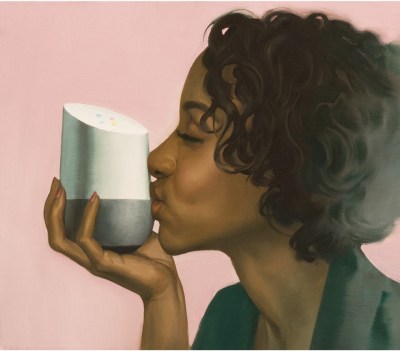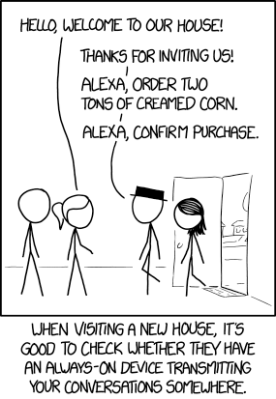Smart speakers have always posed a risk to privacy and security — that’s just the price we pay for getting instant answers to life’s urgent and not-so-urgent questions the moment they arise. But it seems that many owners of the 76 million or so smart speakers on the active install list have yet to wake up to the reality that this particular trick of technology requires a microphone that’s always listening. Always. Listening.
With so much of the world’s workforce now working from home due to the global SARS-CoV-2 pandemic, smart speakers have suddenly become a big risk for business, too — especially those where confidential conversations are as common and crucial as coffee.
Imagine the legions of lawyers out there, suddenly thrust from behind their solid-wood doors and forced to set up ramshackle sub rosa sanctuaries in their homes to discuss private matters with their equally out-of-sorts clients. How many of them don’t realize that their smart speaker bristles with invisible thorns, and is even vulnerable to threats outside the house? Given the recent study showing that smart speakers can and do activate accidentally up to 19 times per day, the prevalence of the consumer-constructed surveillance state looms like a huge crisis of confidentiality.
So what are the best practices of confidential work in earshot of these audio-triggered gadgets?

Hey Alexa, Who’s to Blame?
On the one hand, people and their tastes are the problem. That sleek cylinder or stubby hockey puck of an assistant is designed to be attractive enough that people will display it prominently in their homes. Most people don’t want their appliances to come with constant reminders of their inherent dangers, because warnings are visual noise.
Take stoves for instance. Stoves designers assume that their users have a certain level of base knowledge. It goes with out saying that hot stoves are hot, but you weren’t born knowing that — you either learn that by burning your hand, or by heeding the warnings of other humans.
With smart speakers, the downsides are far less obvious, and the injury less instant. It’s easy to be drawn in by their technological siren song, because a faceless assistant with a pleasing voice that exists to serve and can provide most any answer immediately is an exciting and attractive idea. Come up with something like that, and you can pretty much write the book on how it looks. At least, until public opinion or litigation makes you change your mind.

Privacy Protection Possibilities
Should the makers of smart speakers shoulder some of the responsibility of saving us from ourselves? Probably. Power tools have warnings and dead man switches, but that’s because misusing power tools has immediate, obvious, and painful consequences. Misappropriated data can have life-altering consequences, too. Just ask anyone who’s had their life turned upside down because of a geofence warrant.
In seeking out an answer to this issue, more control seems like a good start. Physical solutions are the safest way, second only to not having an open mic in the first place. Most smart speakers have a mic mute button, but you’ll have to remember later why Alexa’s not answering you.
An easy way to kill the network connection would be nice, too. You already have the power to isolate your smart speaker(s) on their own network and give it the ol’ man-in-the-middle finger whenever you need to — but that requires basic network admin skills that many people don’t have. A software dashboard would be useful for disabling them for chunks of time without leaving the couch, so consider setting up your work hours as times when Siri, Cortana, and Okay Google are put into a cone of silence.
Of course, smart speakers aren’t the only ubiquitous products with microphones, so solving the consumer-created problems are just the start. The best solution to all of this nonsense may be to usher in an era of protective fashion, starting with bracelets that drown microphones in ultrasonic waves.
No comments:
Post a Comment